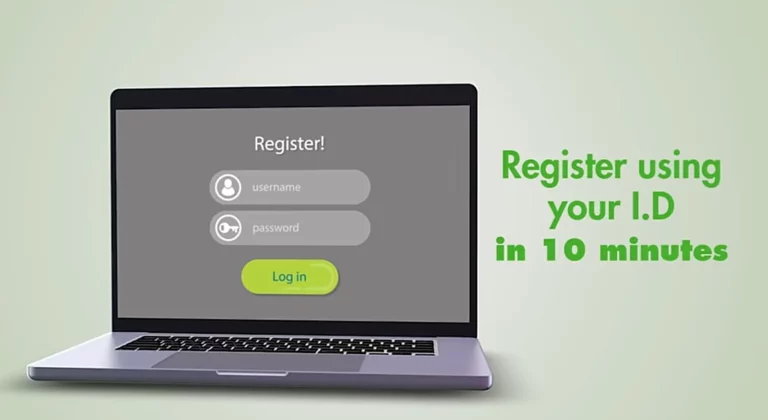Let me tell you about Sarah, a friend who transformed her struggling lending business into a market leader.
The secret? It wasn’t just better rates or faster approvals.
It was something more fundamental: a clear mission and vision that resonated with both her team and customers.
Defining your lending business’s mission and vision isn’t just a corporate exercise – it’s the foundation that will guide every decision you make.
In this guide, I’ll show you exactly how to craft mission and vision statements that will set your lending business apart.
What You’ll Need
Before we dive into creating your lending business mission and vision, let’s gather the essential tools:
Required Resources:
- Market research data
- Competitor analysis
- Customer feedback
- Team input
- Industry trends report
Recommended Tools:
- Survey software (like SurveyMonkey or Typeform)
- Data analytics platform
- Collaboration tools (Miro or Mural for brainstorming)
- Document sharing platform
How to Define Your Lending Business Mission and Vision (+ Examples)
1. Market Analysis (The Foundation)
The first step in defining your lending business mission and vision is conducting a thorough market analysis.
Think of this as building the foundation of a house – skip this step, and everything else becomes unstable.
Let me walk you through exactly how to do this right:
Start with Your Current Position
- Document your existing market share
- List your primary lending products
- Analyze your customer demographics
- Review your pricing structure
- Assess your approval rates and criteria
Research Your Competition
Don’t just look at what they’re doing – understand why they’re doing it.
- Analyze their mission statements
- Study their marketing messages
- Review their product offerings
- Understand their unique value propositions
- Identify gaps in their service
Map Customer Pain Points
Here’s where most lenders miss the mark. They focus on products instead of problems.
- Survey existing customers
- Interview potential customers
- Analyze complaint data
- Review social media feedback
- Study industry forums and discussions
Pro Tools for Market Analysis:
- SEMrush for competitor analysis
- Qualtrics for customer surveys
- Google Analytics for website behavior
- Social listening tools like Mention
Remember: Your goal isn’t just to gather data – it’s to understand the narrative behind the numbers.
2. Core Values Identification
This is where you define what your lending business stands for beyond profit margins.
I learned this lesson the hard way in my consulting work: core values aren’t just wall decorations.
Here’s your action plan:
Begin with Team Workshops
- Schedule multiple sessions (minimum 3)
- Include representatives from all departments
- Use anonymous voting systems
- Document all suggestions
- Look for patterns in responses
Stakeholder Input Process
Create a structured approach to gathering input:
- Send preliminary surveys
- Conduct one-on-one interviews
- Host focus groups
- Gather written feedback
- Create synthesis reports
Value Definition Framework
For each potential core value, answer these questions:
- How does this value impact lending decisions?
- Can we measure adherence to this value?
- Does this value differentiate us?
- Is this value sustainable long-term?
- How does this value serve our customers?
Warning Signs to Watch For:
- Generic values without specific meaning
- Values that conflict with profitable lending
- Unmeasurable or vague statements
- Values that don’t align with market needs
3. Mission Statement Development
Your mission statement is your “why” in action.
Let me show you how to create one that actually means something:
Start with Your Impact
Answer these key questions:
- What specific financial problems do you solve?
- How do your solutions change lives?
- What makes your approach different?
- Who benefits most from your services?
Building the Statement
Follow this proven framework:
Problem Statement
- Identify the main financial challenge
- Quantify the impact when possible
Solution Approach
- Define your unique methodology
- Highlight key differentiators
Target Audience
- Be specific but not limiting
- Consider future market expansion
Testing Your Mission
Before finalizing, ensure your statement:
- Can be understood by a 12-year-old
- Passes the “so what” test
- Motivates your team
- Resonates with customers
- Guides decision-making
Real-World Application:
Create scenarios and test how your mission guides decisions:
- Loan approval edge cases
- Product development choices
- Customer service situations
- Marketing messages
- Partnership opportunities
4. Vision Statement Creation
Your vision statement is your North Star – it shows where you’re headed.
Here’s how to create one that inspires action:
Future State Definition
Begin by imagining your ideal future:
- Market position
- Customer impact
- Industry innovation
- Community role
- Team culture
Vision Development Process
Initial Brainstorming
- No constraints phase
- Wild ideas welcome
- Future-focused thinking
Reality Check
- Market analysis alignment
- Resource consideration
- Timeline feasibility
Refinement
- Stakeholder feedback
- Customer validation
- Team input
Vision Statement Components
Your statement should include:
- Time horizon (5-10 years)
- Measurable outcomes
- Industry position
- Customer benefit
- Societal impact
Implementation Strategy
Create a roadmap that includes:
- Quarterly milestones
- Annual goals
- Key performance indicators
- Review processes
- Adjustment mechanisms
Mission and Vision Statement Examples for Lending Businesses
Traditional Bank Lending
Example 1: National Commercial Bank
Mission: “To empower businesses through accessible, transparent, and responsible lending solutions that fuel economic growth in our communities.”
Vision: “To become the most trusted financial partner for mid-sized businesses across North America by 2030, known for our innovative lending solutions and exceptional service.”
Example 2: Regional Community Bank
Mission: “To provide personalized lending solutions that help local businesses and families thrive, while maintaining the highest standards of financial responsibility.”
Vision: “To be recognized as the premier community lender in the Pacific Northwest, serving as a catalyst for local economic development and prosperity.”
Microfinance Institutions
Example 1: Global Micro Lending
Mission: “To break the cycle of poverty by providing affordable microloans and financial education to underserved entrepreneurs in developing markets.”
Vision: “To create a world where every aspiring entrepreneur has access to the capital they need to build a sustainable business.”
Example 2: Rural Finance Initiative
Mission: “To empower rural communities through accessible agricultural lending, combining traditional banking wisdom with innovative financing solutions.”
Vision: “By 2028, we aim to serve 1 million rural entrepreneurs across Southeast Asia, becoming the leading agricultural finance provider in the region.”
Online/Digital Lenders
Example 1: TechFin Solutions
Mission: “To revolutionize lending through AI-powered decisioning that makes credit accessible to qualified borrowers within minutes, not days.”
Vision: “To build the world’s most efficient lending platform, where every credit-worthy individual can access fair financing instantly.”
Example 2: Digital First Lending
Mission: “To democratize access to credit through technology, offering transparent, paperless lending solutions that adapt to modern lifestyles.”
Vision: “To become the go-to digital lending platform for millennials and Gen Z, processing 10 million loans annually by 2027.”
Specialized Industry Lenders
Example 1: GreenEnergy Finance
Mission: “To accelerate the transition to renewable energy by providing specialized lending solutions for sustainable infrastructure projects.”
Vision: “To facilitate $50 billion in green energy investments by 2030, becoming the leading sustainable infrastructure lender in North America.”
Example 2: EdTech Funding Partners
Mission: “To make quality education accessible through innovative student lending solutions that prioritize future earning potential over current credit scores.”
Vision: “To revolutionize education financing by helping 1 million students access quality education through our AI-driven lending platform by 2028.”
Small Business Focused Lenders
Example 1: SmallBiz Capital
Mission: “To fuel small business growth through flexible lending solutions that understand and adapt to the unique challenges of entrepreneurship.”
Vision: “To become the most recommended small business lender in our market, known for our entrepreneur-first approach and strategic guidance.”
Example 2: Main Street Funding
Mission: “To strengthen local economies by providing fast, fair, and flexible financing solutions to small businesses that traditional banks overlook.”
Vision: “To build the largest community of thriving small businesses across America, powered by our innovative lending solutions.”
Consumer Finance Companies
Example 1: Personal Finance Plus
Mission: “To help individuals achieve their life goals through responsible lending solutions that promote financial wellness and long-term success.”
Vision: “To be recognized as the most trusted consumer lending partner, serving 5 million satisfied customers by 2026.”
Example 2: HomeOwner Partners
Mission: “To make homeownership accessible through innovative mortgage solutions that look beyond traditional credit metrics to assess borrower potential.”
Vision: “To help create 1 million new homeowners by 2030, revolutionizing the mortgage industry through technology and trust.”
Social Impact Lenders
Example 1: Community Impact Capital
Mission: “To create positive social change through lending solutions that prioritize community development, job creation, and sustainable growth.”
Vision: “To build resilient communities across underserved regions by deploying $2 billion in impact-focused loans by 2029.”
Example 2: WomenLend
Mission: “To close the gender finance gap by providing tailored lending solutions and mentorship to women entrepreneurs.”
Vision: “To become the largest women-focused lending platform globally, empowering 1 million women entrepreneurs by 2028.”
Key Elements Breakdown
Effective Mission Statements Include:
- Clear target audience
- Specific value proposition
- Unique approach
- Measurable impact
- Social responsibility element
Strong Vision Statements Contain:
- Timeline
- Quantifiable goals
- Market position
- Innovation focus
- Broader impact
Tips for Customization:
Scale Appropriately
- Adjust scope based on your size
- Set realistic timelines
- Match resources to ambitions
Stay Authentic
- Reflect your true values
- Consider your market
- Match your culture
Remain Flexible
- Allow room for growth
- Consider market changes
- Plan for evolution
Maintain Focus
- Choose specific targets
- Avoid being too broad
- Keep language clear
Remember: The best mission and vision statements are those that truly reflect your organization’s values while providing clear direction for growth and decision-making.
Tips for Success
Success in crafting your lending business mission and vision requires attention to detail.
Key Success Factors:
- Authenticity in messaging
- Team alignment
- Customer-centricity
- Measurable outcomes
Tools for Implementation:
Common Mistakes to Avoid
Learn from others’ failures to ensure your success.
Most Common Pitfalls:
- Being too generic
- Ignoring market realities
- Focusing solely on profits
- Creating disconnected statements
Prevention Strategies:
- Regular reality checks
- Stakeholder validation
- Market testing
- Periodic reviews
Troubleshooting Guide
When things aren’t working, here’s how to fix them.
Common Issues and Solutions:
Lack of Team Buy-in
- Solution: Collaborative workshops
- Implementation: Regular feedback sessions
Misalignment with Market
- Solution: Customer research
- Implementation: Quarterly reviews
Poor Communication
- Solution: Clear messaging framework
- Implementation: Training programs
Conclusion
Creating a strong mission and vision for your lending business isn’t just about words on paper.
It’s about setting a clear direction that will guide your team, attract the right customers, and drive sustainable growth.
Remember: The best mission and vision statements evolve with your business while staying true to your core purpose.
Read also:




